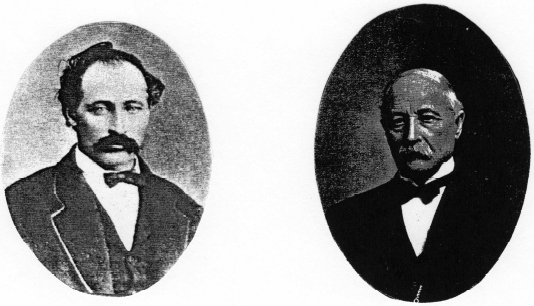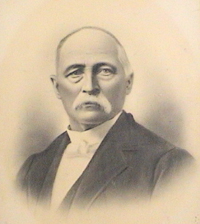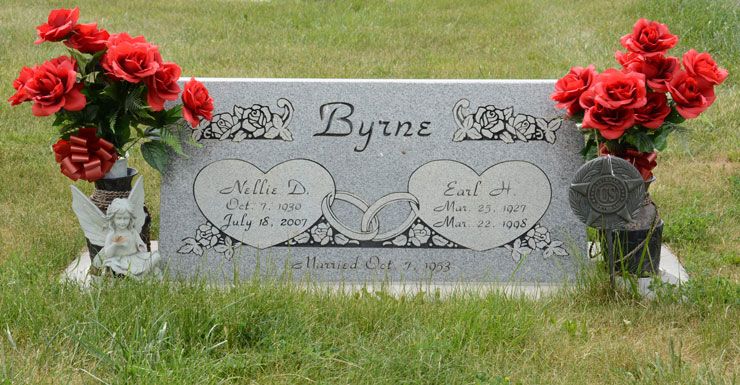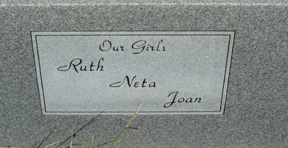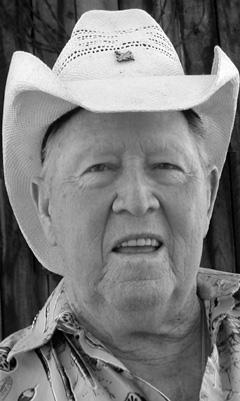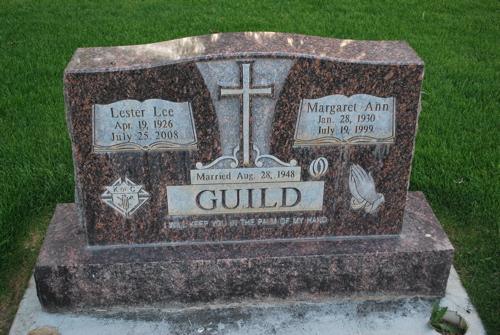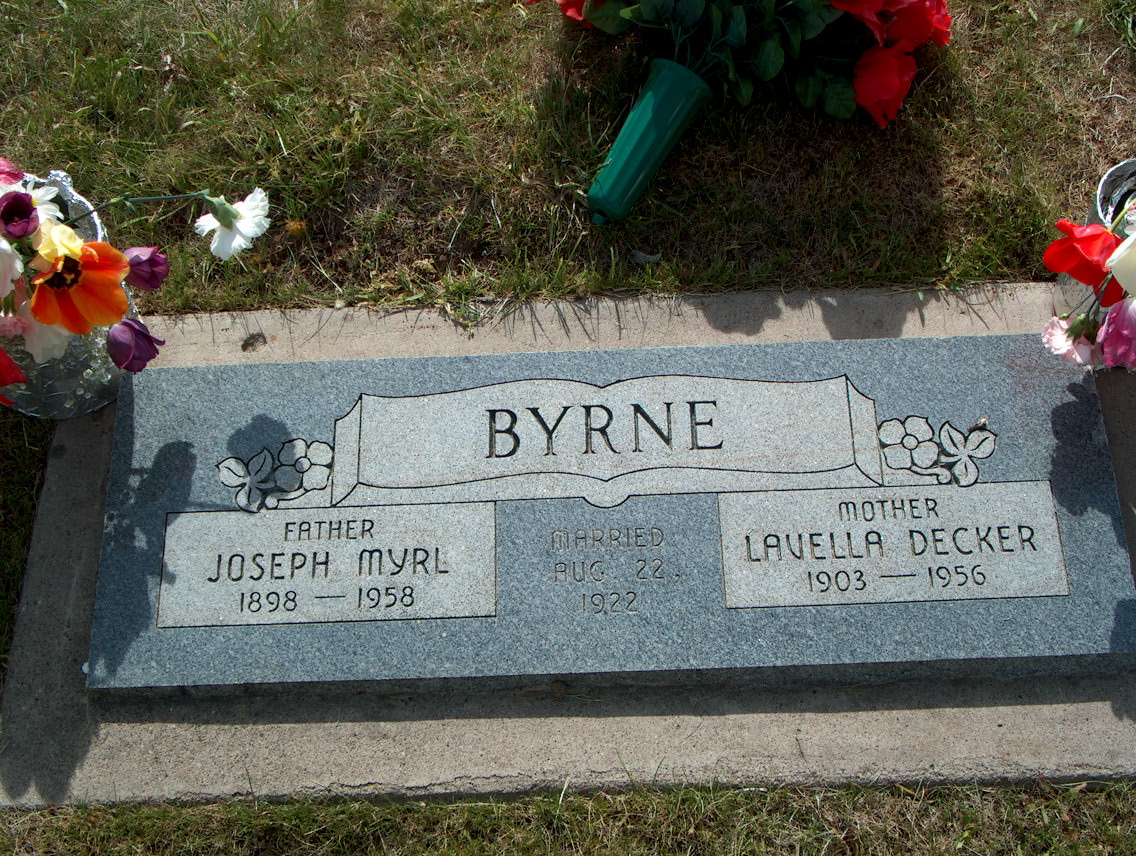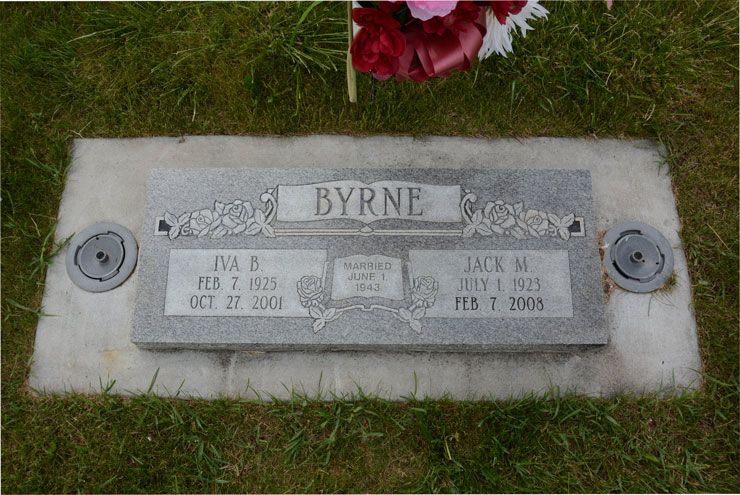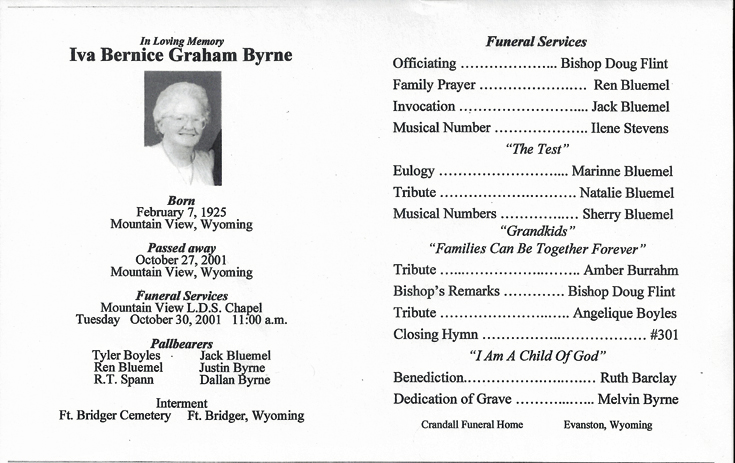9 Mar 1832 – 9 Apr 1911
Son of Philip Cardon and Martha Marie Tourn
A BRIEF STORY OF LOUIS PHILIP CARDON 1832-1911
By Lucille Cardon Matthews, 1968
While we were living in the State of Chihuahua Mexico the excitement of a trip to Colonia Juarez, to visit Grandpa Cardon, started the night before, when each arranged the clothes she was going to wear, for the race to be first dressed in the early morning dark, since we weren’t allowed to handle the coal oil lamps.
No one wanted to waste time on breakfast, and maybe miss being along that two mile stretch of road between Dublan, and Nuevo Casas Grandes, where there would be nothing but a telephone line and railroad tracks between us and the horizon to meet “Rosy Dawn of Day” when she came to say “See! The Sun in all his Glory rise right now.” Such Grandeur! Such fun, Papa leading the songs of greeting, we added our two cents worth, with Mama reciting proper poetry, a highlight of the trip. Nowhere is the sunrise more wonderful, etched forever on the memory.
And I remember Grandpa Cardon, his was a quiet disposition, there was something about his dignified bearing that demanded respect wherever he happened to be. Related incidents show he could be very firm when occasion called for it. Between five feet nine and eleven inches tall, medium weight, his nice complexion, alert gentle brown eyes, the right background, to set off the whitest thatch of hair and bushy mustache. I was never sure if his slight stoop came from naturally walking with his head thrust forward, or if he was a little bent with age. I am sure it had nothing to do with him carrying a walking cane. Thatwas the mark of a gentleman. It made me so proud to be allowed to walk with him, if only across the back end of the lot.
His name is on the Honor Roll as a head of the first founding families and builders of the Colony of Juarez, the same roll also lists as heads of family, Joseph S. and Emanuel P. Cardon, Grandfathers two oldest sons. So he wasn’t real young when he went there. A skilled mason and stonecutter, he did much to erect the homes and public places in town, he helped lay the walls of the first mill used for grinding grains raised by the farmers.
He built the two story brick home surrounded by fruit and shade trees where he lived with “Grandma Juarez” to us children “Auntie” to our parents, nee Sarah Ann Welborn. Against the north side of the house was a large grape arbor a work and rest area, where Grandma Sarah prepared fruit for canning, cleaned vegetables, did mending and read. She let us bring friends to play there, out of ripe grape season, of course. It made one feel very privileged. We loved our Grandma “Juarez”. She treated us as though we were her natural grandchildren, always so pleasant. Sixty years of time has dimmed my memory picture of her except as a shadowy figure much larger than our own Grandmother Susette, standing at the range preparing the breakfast treat in an iron skillet an omelet of eggs, canned salmon, and corn, something no one else could do.
Their house faced east, a marvel was grandfathers well in front of it, a little south of the broad pathway to the front entrance. So many people came for the good water, I felt sure the “old Oaken Bucket” must have been written about it, and he located it in that spot, invited folks to use it so they wouldn’t have to dig one of their own, a nice assurance he’d always have someone dropping by. Many many years later I learned due to an underground hardpan it was the only place a well could be dug. In fact for the same reason there was but one other well in town so half the town drew water at his well. I did notice no one used his front walk when coming for water. It was reserved for neighbors, friends, city fathers, Church dignitaries, and others who came to make social or business calls. Those same people coming for water used the little gate opening on the south side street.
At a native place called Cardon, in the village of Prarostino, located in one of Italy’s three Cottian Alp Valleys commonly known as Piedmont Valleys, on March 9, 1832, the fifth child and third son of Philippe and Martha Marie Tourn CARDON, was born, christened LOUIS PHILIP, his family called him PHILIP, called LOUIS, by those who knew him from his signature, LOUIS P. CARDON, at times identified by his initials, L.P. CARDON, all four have been used in a single history. Yep, it is rather confusing, especially, since the Cardons just do use the same names over and over, or a mixed match combination of them, that make a similar initials or the same signature. I.e., Louis Philip and his son Louis Paul.
Philippe Cardon was a builder of houses, his sons skilled at the same trade from working on the buildings he erected. Philippe and Martha Marie were parents of nine children. They lost two very young. (See family group sheet). Theirs was the 2nd family to join the Church of Jesus Christ of Latter Day Saints, when the Gospel was brought to the Alpine Valleys in 1851. In her history the daughter Mary Magdelaine tells of the meetings being held at her father’s home for two years.
In 1854 Philippe sold what he could of his property, gave what was left to Ann, his eldest child, her husband just couldn’t see the gospel as true and forbade her to listen to the missionaries. Philippe had realized enough from what he sold to bring to Utah a family of five souls besides his own wife, four sons, and two daughters. Leaving their native land, 7 February 1854, as members of the Robert M. Campbell Company, they sailed for America on the ship John M. Wood, landed at New Orleans , 2 May 1854. The climate, terrain, and language so foreign to anything they had ever experienced, added to the difficulties of natural hardships of emigrants crossing ‘The Plains’ by oxen drawn wagons, accepted with the same grace all Vaudois or Waldenses, met trials, turned against by relatives, friends and townspeople, embittered toward all who embraced the new gospel.
Mary Magdelaine, relates “Before leaving home the Elders had blessed each one, telling them they would encounter sickness, accidents, and other dangers. They promised the Cardon family through their faith and trust in God, they would all reach Utah .” The weather threatened to sink the sailing ship. Cholera brought death and weakness to many among the latter were Father Philippe and Thomas the youngest son. No small hindrance was the dependence on unbroken to yoke, almost unmanageable animals at the start of the long trek.
One night Indians out numbered the herders and drove every ‘critter’ across the river into the brush. Next morning there came a cry for all swimmers to cross the river, round up the cattle and drive them back to camp, a count found not one missing. The boys and younger men expressed their joy by ‘horsing around’ in the water. Although a fair swimmer Philip, stepped backward into a deep whirlpool, and nearly drowned before he could be dragged out, it took quite some effort, and prayer, to save him. His first muttered words were “Why didn’t you let me sleep, instead of causing me such great agony. Death is easy to a drowning person, to what the sufferings are to be brought back to life.” Some have wondered what a drowning person felt.
With faith undaunted every member of Philippe’s family and the family he brought with them, on Sat. 28, October the last company of emigrants for the year 1854, arrived at G.S.L. City .
The Cardon family went on to Weber County . It was four years after the first Branch of the Church was organized there.
Thus ended the first of son Philip’s many moves.
Ostracism and cruel persecutions for their way of worship was not unknown to the valiant Mormon converts from the Vaudois or Protestant Piedmont Valleys . Traditionally the people of these Valleys belong to a Church, which is held to be the direct result of the teachings of the Apostles of early Christianity, never having belonged to the Roman Catholic Religion, for centuries they went unnoticed by the Head of that Church, the Pope being occupied subduing kings of more important nations.
Then came 800 years, in which off and on severe persecutions were hurled against them. Forced to leave their homes time and again, rather than be exterminated or compelled to accept a religion, which to them had departed from its primitive purity and simplicity, they were exiles and martyrs but not apostates.
They had enjoyed religious freedom for a time, when Napoleon, conquered Piedmont . Following his defeat in 1814, they were again cruelly persecuted until 1848 (the youngest child of Philippe Cardon was six years old) when the King of Sardinia granted his Vaudois subjects religious freedom. The long war between Rome and the mountain Churchwas ended.
With unmovable faith they had Trusted God, and He, had delivered them. Time and persecutions had pulled a curtain over their origin and language, to quote Mary Madgelaine, “some never had any real language, either French or Italian, but had a dialect among themselves.” There were several dialects, no schools had been allowed, however most of them had learned enough to read the Bible in French. Some of the men and boys were sent to Holland for schooling.
Philip spoke the dialects, French, Italian, and mastered English without an accent. I have heard him talk to Mexican natives, German and Scandinavian converts, each in what must have been his own language. The one I liked best was to the Romanian Gypsies, as they passed through the Colony of Dublan, picking up anything they could that happened to be lying around loose, bringing great excitement, to the town youngsters, with a large black bear they let us look at for nothing, but if we wanted to see him dance we must pay for it. Every kid emptied his pockets, or dug the horded two centavo pieces, the Gypsies were willing to accept as tickets, or food sneaked from family kitchens, by those who had no ready cash. Not until our business transaction, done mostly in sigh language, was completed, and the bear forced to his feet did we see just standing was agony to him, his paws were raw sores. We lost interest in the once in a lifetime chance of seeing a bear dance, and wanted our money back. They no longer understood the sign language. Grandpa Cardon came to our aid. But no amount of talking made them about to give us a refund, for they would make the bear dance. Grandpa said why not do a good deed, and bargain with them, let them keep the loot, if the bear would not have to dance until his paws were healed. Oh, they promised with many smiles, bows and much waving of the hands. A promise I am sure they kept until they reached the next stopping place.
In the Appendix of George B. Watts, “Waldenses In The New World” we gather before leaving Italy, Louis Philip Cardon, had been ordained a Teacher (2nd step) in the Aaronic Priesthood. Copied from Part 2 of the Dublan Ward of Juarez Stake, “Records of Ordinations to Holy Priesthood” # 318 CARDON Louis Philip, Year 1856, by Joseph R. Young to Office of High Priest.
Philip Cardon married (1) Sarah Ann Welborn, born 13 Jan 1830 Muhlenburg Co. Kentucky daughter of James D. Welborn and Malinda Newman. Sarah had no children. Around 1900, she hired Jane Gibson Sanders (my maternal grandmother) to do the work for many, many of her people at the Manti Temple .
In early 1857, Philip married Susette Stale’ who was the Mother of his children, consequently our Grandmother. She was the daughter of Jean Pierre Stale’ and Jeanne Marie Gaudin-Moise, also Vaudois from the Alpine Valleys, whose family from June to September 1856, walked across “The Plains” in the first Handcart Company. Jean Pierre’s strength gave out. He was buried along the way.
On reaching G.S.L. City , his widow her son and three daughters (see family group sheet) were met and befriended by the Cardons, who had come from Ogden for that purpose. Later Philippe Cardon married Jeanne Marie Stale’.
Philip and Susette’s oldest child, Joseph S. was born, 9 January 1858, the year James Buchanan, President of the United States, after listening to false reports, of seditions, treason, and other horrible crimes unrelated to what was later called bigamy, against President Brigham Young, and Mormons as his followers, without questioning the accusations, secretly sent an Army to suppress or annihilate them. Word they were coming reached Utah before they did.
Rather than being trapped in their homes, the first of May found all of Philippe Cardon’s family among the Saints from the North Settlements in G.S.L. City, prepared for the move of the Mormons in a body, south for Sonora Mexico, ‘tis said. They had been instructed to cache most of the three year food supply each was supposed to have stored, and leave enough men in each settlement, to set fire and destroy every building, field and garden if the soldiers were unfriendly.
When the new Governor and his wife found G.S.L. City and the other towns vacant, disappointed plunder promised troops were ordered not to stop in the towns. President Young was contacted, resulting in his return to Salt Lake City , Thursday July 13, 1858. Not long after all Saints had drifted back to their homes. Susette’s second child Emanuel was born in Ogden, 29 Jan 1859, after her return. Four months later Logan, in Cache Valley, was settled, a future home or stop over place of Philippe and Martha Marie Cardon, and most of their children, Philip and his brother Paul’s families moved to Logan before Mary Katherine (our Aunt Katie) was born 9 April 1861. She told us her parents had hoped by moving to a frontier village they would avoid the unpleasant incidents caused by the great agitation going on over plural families, in the heavier populated towns. It was a short-lived peace, the persecutions with more settlers reached Logan . Philip Cardon moved his family to Oxford, Cache Valley’s most Northern boundary, considered part of Utah, where the taxes were paid until 1872, when Idaho made her claim to the land ‘stick’ and Oxford Cache Valley Utah became Oxford Oneida Idaho. Which explains why Grandma Susette claimed her two youngest children Louis Paul (our Father) 17 March 1868, and Isabelle Susette November 1872, were born in Utah . They lost her in her second year.
Molested by Indians everyone lived in the Fort, until 1868 before they felt safe to move out to their own lots. Oxford was sort of a string town, Philip’s family, like all pioneer villagers or all folks of farm communities, used every member of the family male and female to plant and harvest, fields, orchards, and gardens, to raise chickens, ducks, and domestic animals for, work, transportation, and butchering for food. Philip and his sons raised sheep for revenue, the women made pillows feather beds and comforters of the duck feathers, Susette spun wool into threads, for weaving into cloth, and sock knitting, she knit blankets, Auntie Sarah made quilts and taught Katie how, and to sew. They may not have greatly prospered, but they did follow advise of Church Leaders, and stored a three year supply of food, were well clothed in homes as comfortable as frontier conditions at the time allowed.
1876 the long arm of the Federal Judge located in Utah, unlawfully reached up into Oxford, arrested both men and women, placing them under exorbitant bonds, many unable to raise the bonds, were fined, incarcerated, or both for what was called “u c” (unlawful cohabitation) not applied to unmarried cohabiters.
In his biography Uncle Joe words it “They were being persecuted for conscience sake when President Brigham Young saw fit to call them to Arizona .” Aunt Katie gave this detail, “Father, very concerned made a trip to Salt Lake City to seek advice from President Young. He reported to his family, President Young rose from his chair, smote the palm of one hand with the doubled fist of the other and said “Brother Cardon, it is time for the Saints to settle Arizona as I have been thinking about. Be here in a week with your wife and belongings. The company will be ready to leave then.” The wife of course meant Grandmother Susette since Auntie Sarah would not be chastised or imprisoned.
The four companies with four captains, Allen, Ballenger, Lake, and Lot Smith, also the leader, gathered about twenty miles north of the Arizona border. Captain Lake was George D. Lake , Bishop of Oxford Ward, where he moved the same time as Philip did and for the same reason. From Uncle Joe we learn to Orderville they traveled together, Uncle Manuel accompanied them, to aid in hauling provisions, farm machinery, and seeds, in wagons drawn by oxen and mules. Going all the way to Arizona , he left them at Lakes camp called Obed on the Little Colorado River, about twenty miles from the Sunset Crossing, near which the Lot Smith Group settled, and across the river from Allen’s camp (later St. Joseph , now Joseph City ). Ballenger’s company settled in Brigham City (now Winslow?). Copied from Louis Paul’s sketch of Obed… “Obid was by far the most comfortably situated of the settlements but unfortunately it was swampy and due to malaria had to be abandoned. Father being mason and stone cuter had supervision of the buildings. The village was entirely surrounded by a stonewall about nine to ten feet high with port holes properly arranged to defend themselves against the Indians. The houses were arranged on the inside of the Fort, some were made of stone and had slate for floors, the roofs were of slabs arranged like shingles, so they were very comfortable.”
In all of these settlements the “United Order” was practiced, at Obid there were very few women, Grandmother told me she was sick and did not help with the cooking. Cardon’s better-filled supply wagon helped those less blessed. She also told this.
“The Colorado River was crossed at Lee’s Ferry, where everyone, but the driver, got out to walk up the hill famous for its torturous boulder strewn dug way, she drove up the hill. It may be she was driving one of the ox teams, and could handle them better than Grandfather. At any rate he did the walking. He was one of that noble strength and rugged school of men who considered babies and young children some sort of creatures not quite human, supposed to be handled by mothers and female attendants only. Having never known him to hold his own babies, Grandmother could hardly believe her eyes when she saw him take from its mother’s arms the baby of Sister Lot Smith, whose prairie schooner was just in front of hers, to carry it up the hill. If getting the wagon up the hill hadn’t taken every ounce of her strength and skill, she might have had time to resent it, as Lot Smith seems to have done. Perhaps he felt Grandfather should have been free to block the wheels or put a shoulder to them.
At the top of the hill Lot, stopped for his wife, then answered something she said in a booming voice “I am not responsible for Brother Cardon and his baby” and drove on, leaving Grandfather to climb awkwardly over the wheel of his own prairie schooner with the baby and clumsily hold it until everyone had to unload for the next dug way. “I never forget to laugh – to myself – about that” chuckled Grandma as she finished telling the incident, one of her most truthful statements.
The Arizona move belonged to “The Planting of Colonies” missionary program of the L.D.S. Church , all over the west from Canada on the North to Mexico on the South. Anyone could volunteer to join a “Company” but those “called” to go were missionaries, set apart and released as any missionary or Elder holding an Office in the Church.
Gleaned from Uncle Joe’s biography:
When Apostle Brigham Young (son of President Young) informed Joseph he and Emanuel were to consider themselves missionaries “called” to Arizona, they answered the call, (a Cardon habit) settled all business in Idaho and “started 6 October 1876 for Arizona, our outfit consisting of six mules, five yoke of oxen, four heavy wagons, (meaning built for hauling freight) one single team, and a herd of sixty-five head of stock.” Joseph called the journey “quite an undertaking.” They were accompanied by _____ & family and Amelia Merrick, who Emanuel married in Salt Lake City .
That must be the understatement of all time. For Uncle Joe, at the ripe old age of going on nineteen, had with him, his wife and one child, the second to be born in January. Grandma used to say that was alright “because Joseph, never was a boy”. He drove the oxen, pulling two of the wagons, and Emanuel, almost eighteen, drove the mules and the other two heavy wagons. (He must not have wasted time in the ‘Land of Youth ’ for Louis tells in his manuscript, they stopped in Salt Lake City , for Manuel to marry Amelia Merrick.) The women drove the team with the lighter wagon. Two or three boys were hired to help eight-year-old Louis drive the stock. He called the trip long and tedious taking about three months. Joseph wrote on Christmas Day they pulled into the deserted Fort at Moenkopi (Tuba City) 136 miles north of Obed, the stock were worn out, it was time for Selina’s baby, so with “Auntie” he just camped for the rest of the winter. Emanuel with the mule teams went on accompanied by his wife, Katie and Louis, to be met by their Father and Mother.
Encyclopedic History pp. 963 names Louis P. Cardon with three others in December 1876: …”came from Allen’s Camp, ( Later Joseph City) to select a site for a dam in the Colorado River . Others came out to work on the dam…” Again quoting Uncle Joe, “my father and brother came back as far as Moenkopi in March 1877 to meet me and I moved to Camp Obed . After staying there a few weeks I moved up the river and located Woodruff in connection with Father, Emanuel, and William Walker … we were the first families to locate at Woodruff, and were joined later by Elder Nathan Tenny and others.” The place was first called Tenny’s Camp. Louis Paul’s life sketch adds an interesting little side light. “Soon a Ward organization was formed, and we entered in to the United Order System, as practiced in those early days. Our folks had brought provisions sufficient to last two years or more. It with all our other belongings were put into a common fund. There were others who were not so fortunate, particularly in regard to provisions, so it was not long until we were all eating whole wheat ground on coffee mills and the little beer mills run by Mexicans in St. John …. We all ate at the “Big Table” the cooking being done by groups of women with a man helper, taking turns. One morning my Father said to the man who had charge of the kitchen, “Brother Dean this graham has not been sifted.” Brother Dean replied “You’ll have to learn to eat what is put before you.” Father said “No I won’t.” He immediately arose from the table. There was some commotion, but no more big table.” My Papa didn’t like Big Tables. Any way the two-year supply was so far gone the Presiding Elder of Woodruff also in the Stake Presidency, called Joseph, with selected others to earn provisions for all until a dam across the Little Colorado could be accomplished. In time, the cows and other stock were returned to whoever owned them.
The Cardon men Philip, Joseph, Emanuel, and now Katie’s husband Joseph H. Clawson felt they must move to a place where they could raise a crop. Woodruff was a difficult place. Joseph H. Richards kept a good diary of activities in Obed.
A dam had been put across Silver Creek, about three miles south of Snowflake, where two men had harvested grain in 1878. So, December of that year, that was the place where they moved. Carter’s “Heart Throbs of The West” page 472 quotes Encyclopedic History by Jenson and McClintock’s “Mormon Settlements in Arizona ” for Taylor town site established December 1878, was surveyed by a group of interested residents led by Joseph S. Cardon their chain being a rope.” The original name was Bagley (one of the harvesters), then changed to Walker , honoring the Walkers who came from Idaho with Joseph. That name was changed to Taylor in 1881 to have a Post Office, Arizona already had a Walker Post Office. In 1880, John H. Standford was made Bishop of Taylor Ward.
Louis Paul’s manuscript has the nicest story of early life in Taylor . Copied: “The first work we did in the winter and spring was to clear the land and plant it. We succeeded in getting very good crops the first year, and in putting in a brush and rock dam bringing out the water through a canal made mostly with pick and shovel.
My father’s family formed a company, consisting of my father, two older brothers, and Joseph Clawson. I was a chore boy. They took a contract of freighting 6,000 pounds of flour from Sholow to Fort Apache. Joseph Clawson had the horse and mule teams for that freighting. The company was working on the railroad and also freighting out toward Albuquerque, New Mexico which enabled the rest of us to do the work necessary for raising crops. Which we did with the oxen. There was no fence law. When the crops were in, the fields had to be fenced and stock must be herded off until this was completed. We made a pole fence. Emanuel and I got the poles, while Father and Joe put the fence up. It took three days to get a load of poles. They would work putting in the fence during the daytime and keep cattle off the green wheat during the nights.
In the fall of 1884 my father, Joseph, Emanuel, and myself took about 3,000 head of sheep on shares. Just after the sheep were taken, Father and Joseph were advised by President Taylor to move to Mexico .”
Edmunds anti-polygamy bill had become a law. With law on their side, Utah Enforcement Officers, in their zeal to round up all culprits, were making raids on the brethren in Arizona .
Copied from Church Chronology by Jensen, p. 118, 1885 Mon. February 9: A number of Saints going into exile because of their family relations left Snowflake Arizona for Mexico . On their arrival at Luna New Mexico on the 15th they were organized into a traveling company with E.A. Noble as Captain. The company increased to about 70 souls (mostly men) March Saturday 7. Captain Noble’s company of Arizona exiles arrived at a point on the Cases Grande River near the town of La Ascencion , Chihuahua , Mexico .
Ah! La Ascencion! La Ascencion! How could you do it?
Six decades later yet the memory of it stops me right near the end of writing Grandpa’s history, just like you stopped and arrested that personification of honesty, Uncle Manuel, and his two innocent nieces, near the end of their trip to Diaz, held them with six armed guards, for stealing, because the bawling of the pure breed Jersey bull calf we had sounded to you like the bellowing of Don Corrlettis’ long horned Mexican cows.
Back to Philip Cardon’s Moves: The Company divided Philip and Joseph moving on to locate on the Peadres Verdes River , to be founders of Colonia Juarez 1885. Sun. Jan 31, 1886 – meeting was held in the 1st L.D.S. house of worship built on Mexican soil, beyond a doubt Philip Cardon had a big part in erecting it. From the same source Church Chronology p. 139 1886 Sun. Oct 17 – Joseph Cardon is honored as President of the first Latter Day Saints Y.M.M.I.A. in any Mexico Mission.
While Philip and son Joseph were hunting for a peaceful home site for their families, some of the women seem to have remained in Taylor. Joseph wrote he returned to Arizona for the “rest of my family.” Louis decided to help move the families down, which included provisions, household furnishings, all livestock, and sundries. He stayed for several months.
New life in Juarez may not have come under the heading of “Taming the desert.” Putting in dams by pick and shovel, breaking in new land with a walking plow, certainly was the order at hand for the next year or so.
Louis wrote it was necessary to keep an active guard all night or be robbed of livestock, and any other thing. He felt his father was too old for guard duty, and substituted in his father’s turn. (Comment by L C M) Youth must have advanced about fifteen years by the time Louis Paul reached fifty-five. For seventy years found him irrigating all night long.
Grandmother Susette with Louis and the Clawsons continued to make Taylor their home town. Neither Joseph’s or Louis’ version of the Mexico move mentions when Emanuel took his family to live there. His family group sheet shows Taylor as the birthplace of a child in 1895, and Dublan for one born April 1897. Joseph’s family group sheet has 1895 for the first of his children born in Dublan, and December 1897 for the second born there. Louis Paul answering the “missionary call” to move his family to Dublan set up a school system and help with the Ward music, arrived in time for his second child to have Dublan as a birthplace October 1897.
Now the mother, sister, and brothers are united in the same town. It took them several years to persuade their father and Auntie to sell their home in Juarez , and be with them in Dublan.
References
1 – p-4 1st marriage, I do not use the name ‘Hunt’ for Grandma Sarah. It is not used in the Dublan Ward Rec. (M C 3rd u2) 8304 Library No. 8775 Book B. part 1, She was bapt. And confirmed Dec 1845, by Alex Hunt, she may have married him or some other Hunt, but must have been sealed to Philip Cardon, or the Rec. would have called her “Wellborn Hunt.”
2 – Grandma Sanders Manti Record. 2nd Marriage 1—Word of Susette 2—Family Group Sheet of Pierre Stale’.
3—Proving Your Pedigree by A.F. Bennett, pp 93—95.
4—Encyc History of Church p 313, C. Chron. P-57. On p5 –
1 See Family Group Sheet for Philip and Susette’s family.
2—Church Chron. Pp-59-60-61-62.
3—Page 99 History of a Valley (A U H 626)
4—Encyc Hist. Of Church by Jenson, pp 603-618-963.
5—L.D.S. Biog. Encyc. Joseph S. Cardon, pp 127-128.
6—As told to us by Grandmother and Aunt Katie.
From here on out the references are included in the Text.
Agreed! Little was gleaned from days of riffling through all available scraps of data burning the midnight oil digging in “Tomes of Time” seeking a man who did not leave many footprints in their “Sands” nor did he leave a name of great renown, if he left any wealth it is untold. He did leave us a heritage more valuable than either.
Because Louis Philip Cardon, and Susette Stale’ accepted the Gospel of Jesus Christ of Latter-day Saints Church, in a far away land, under adverse conditions migrated to Utah, separately, then together gave us, their children, the blessing of being born in this “Land choice above all others” America! At a personal sacrifice lived its principles in such a manner, their very lives are their testimony to us of the truthfulness of that Gospel, and treasures in Heaven are to be sought above the Riches of this World.
